It’s been a tough year for Lucid, the startup’s Air sedan falling short of sales goals, and weak revenues requiring a $3 billion bailout to keep things going. But the California-based EV maker is betting that it can get a boost from its second product line, the all-new Gravity SUV debuting at the LA Auto Show. Roomy, stylish and sporty, it will also offer, at 440 miles per charge, industry-leading range.
Sir Isaac Newton be damned, Lucid is counting on gravity to give it a lift. More precisely, the Gravity SUV, the nascent EV maker’s second product line.
While the original Lucid Air won broad praise for its design, performance and extended range, this simply isn’t a sedan market. The company is now resting its fortunes on falling in line with consumer demand with the new model making its debut at this week’s LA Auto Show.
“The Gravity SUV represents a significant leap forward for Lucid’s world-leading technology and design,” said Lucid CEO and Chief Technology Officer Peter Rawlinson. “Customers will find an unprecedented combination of space and maneuverability, luxury, and versatility, all seamlessly integrated into one remarkable vehicle with the driving experience and range of a true Lucid.”
Class-above room and cargo space
The 2025 Lucid Gravity rides on an all-new SUV platform. It shares some key modules with the original Lucid Air sedan, design chief Derek Jenkins told Headlight.News, but simply lifting the original architecture would have “introduced unacceptable compromises.”
The new platform enables the electric utility vehicle to tow and operate, at least to a moderate degree, off-road. “We’re not talking about Moab,” said Jenkins, referencing the Utah site of some of the country’s toughest off-road courses. “But it will handle 95% of the (off-road trails) most people care about.”
The basic design doesn’t stray far from that of the original Air model, starting with the slit-like headlamps and the lightbar that stretches across Gravity’s front end.
There’s a gentle roll to the electric SUV’s roofline, rather than the coupe-like roll of the sedan. That allows Lucid to fit in three rows of seats. And by moving the battery pack and motors below the load floor, passengers in each row get near-limousine levels of space. Meanwhile, with the back two rows folded down, Gravity offers as much as 112 cubic feet of cargo space.
And that doesn’t include a frunk, or front trunk big enough that it can serve as a bench seat when the SUV is parked — as Jenkins and Rawlinson both demonstrated during the LA Auto Show preview.
Record range
Even in SUV form, Lucid has been able to deliver one of the industry’s lowest coefficients of drag, at 0.24. That’s a major contributor to the EV’s range which, on at least one version of the Lucid Gravity reaches 440 miles. That’s better than any product in the emerging three-row SUV segment, including both the Tesla Models X and Y.
It does that with a relatively small battery pack, the carmaker claims, though it isn’t providing specific numbers. But on the various versions of the Air sedan it offers packs as large as 114 kilowatt-hours. The Lucid Air Dream Range model set an industry record for any EV at an EPA-estimated 520 miles. Significantly, Rawlinson noted Gravity will get about 3.6 miles per kWh, as much as 50% more than most comparably sized electric crossovers.
“Lucid’s design and engineering philosophy has always prioritized doing more with less,” said Eric Bach, senior vice president of Product and chief engineer. “Gravity applies this principle to offer customers more of what they need — more space, more utility, and more range — while avoiding excess battery cells, added cost of ownership, and unnecessary weight.”
Using a 900-volt electrical architecture, Gravity requires as little as 15 minutes to add 200 miles of range — depending on the output of the public quick charger it’s connected to.
Performance
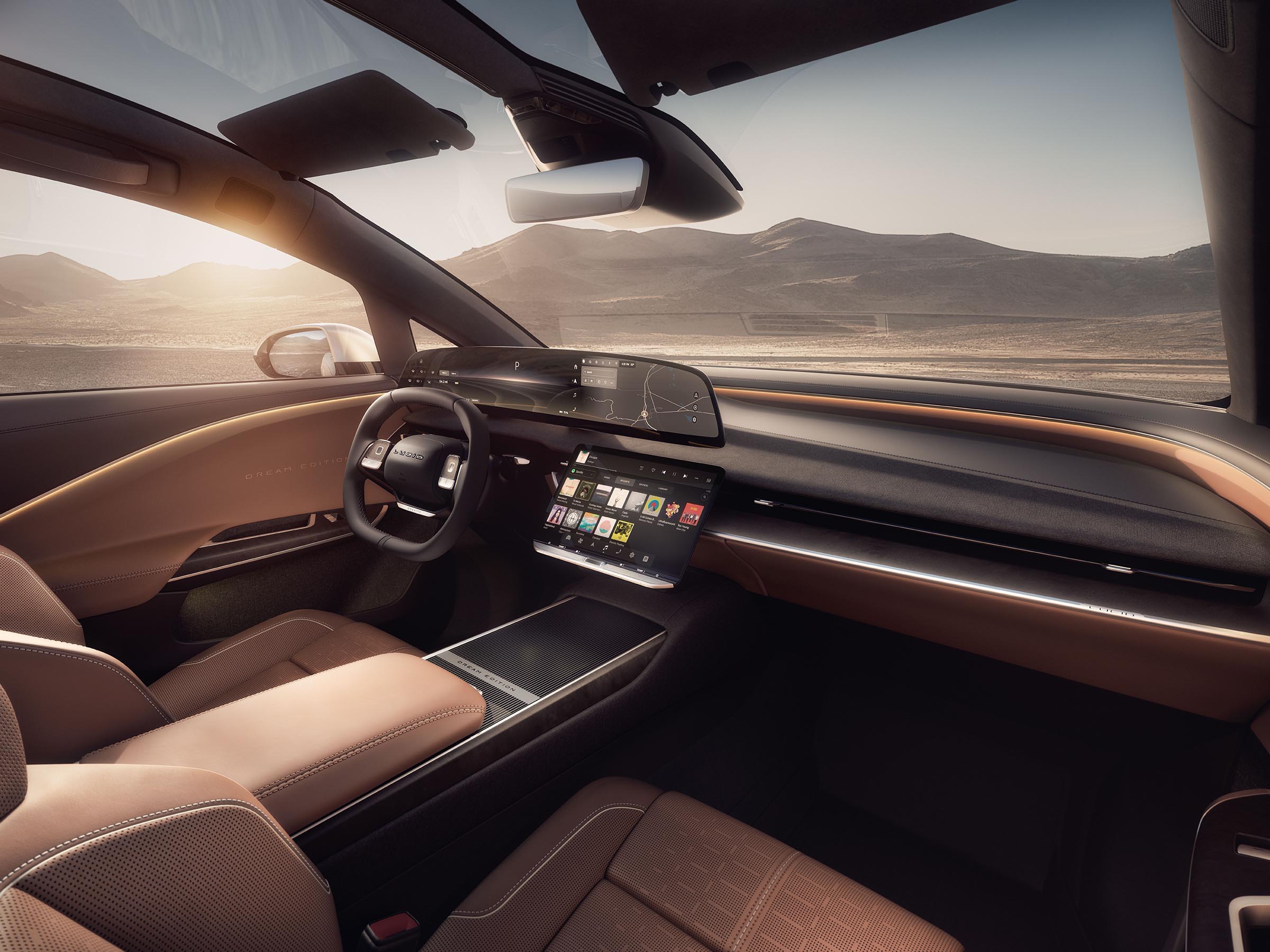
The interior is simple and doesn’t feature the pillar-to-pillar touchscreen becoming common on luxury EVs.
As with the Air sedan, Gravity will eventually be offered in a variety of different trim configurations. Lucid offered up only select specs in Los Angeles though, based on what it did reveal, the launch edition will use two separate motors, one for each wheel, producing a combined 800 horsepower. The automaker claims it will launch from 0 to 60 in just 3.5 seconds. It will handle payloads of up to 1,500 pounds while towing up to 6,000 pounds.
In an exclusive conversation, Jenkins confirmed there will be more Gravity variants to come, “a range similar to what’s now available with Air. A less powerful model will be next in line, he said, while hinting a more sporty trim package also may be in the works.
The 2025 Lucid Gravity’s interior largely mimics what we’ve seen with the Air, albeit with the addition of the third row and plenty of additional headroom.
Tech talk
In today’s EV world, it’s become requisite to cover the instrument panel with digital displays. If anything, Gravity errs on the reserved side. There’s no pillar-to-pillar Hyperscreen like you’ll find in the Mercedes-Benz EQS, just a package of smaller displays under a gently arched piece of glass that extends to the far edge of the center console.
Another, pad-sized touchscreen is mounted on the center stack and, between them, these displays handle virtually all vehicle functions — with only a volume knob and a small number of controls on the steering wheel. Lucid did add a row of conventional controls below the center screen to make it easier to operate the climate system.
That helps address some complaints about the original Air model, though Gravity still requires a driver to use the touchscreen and controls on the steering wheel to adjust both seating positions and sideview mirrors. Lucid also hasn’t said whether Gravity will get the Apple CarPlay and Android Auto features missing on Air. It does feature a Google-based voice assistant but requires you to have a log-in for it to operate.
Digital Detox
The array of video displays can be overwhelming at times, acknowledged Jenkins, especially at night. That’s where Gravity’s Digital Detox system will come into play. With a touch of a button, the screens will darken, only the most critical information, such as vehicle speed and battery state-of-charge remaining visible.
If that isn’t enough, a motorist will be able to pull over and active the Lucid Sanctuary which, said Jenkins, provides “digital experiences designed to create a sense of harmony.” The vehicle also will provide “guided meditation experiences.”
Pricing and Availability
The 2024 Lucid Gravity “lands in late 2024,” the automaker noted in a news release. That couldn’t come fast enough considering the need for an SUV in the EV-maker’s lineup.
Pricing, the automaker said, will start “under $80,000.” But it’s unclear if a base model will be offered right out of the chute. With the sedan, Lucid started out with the high-line Air Dream package which currently goes for $170,500. It is only now rolling out the Air Pure rear-wheel-drive package which starts at $77,400.


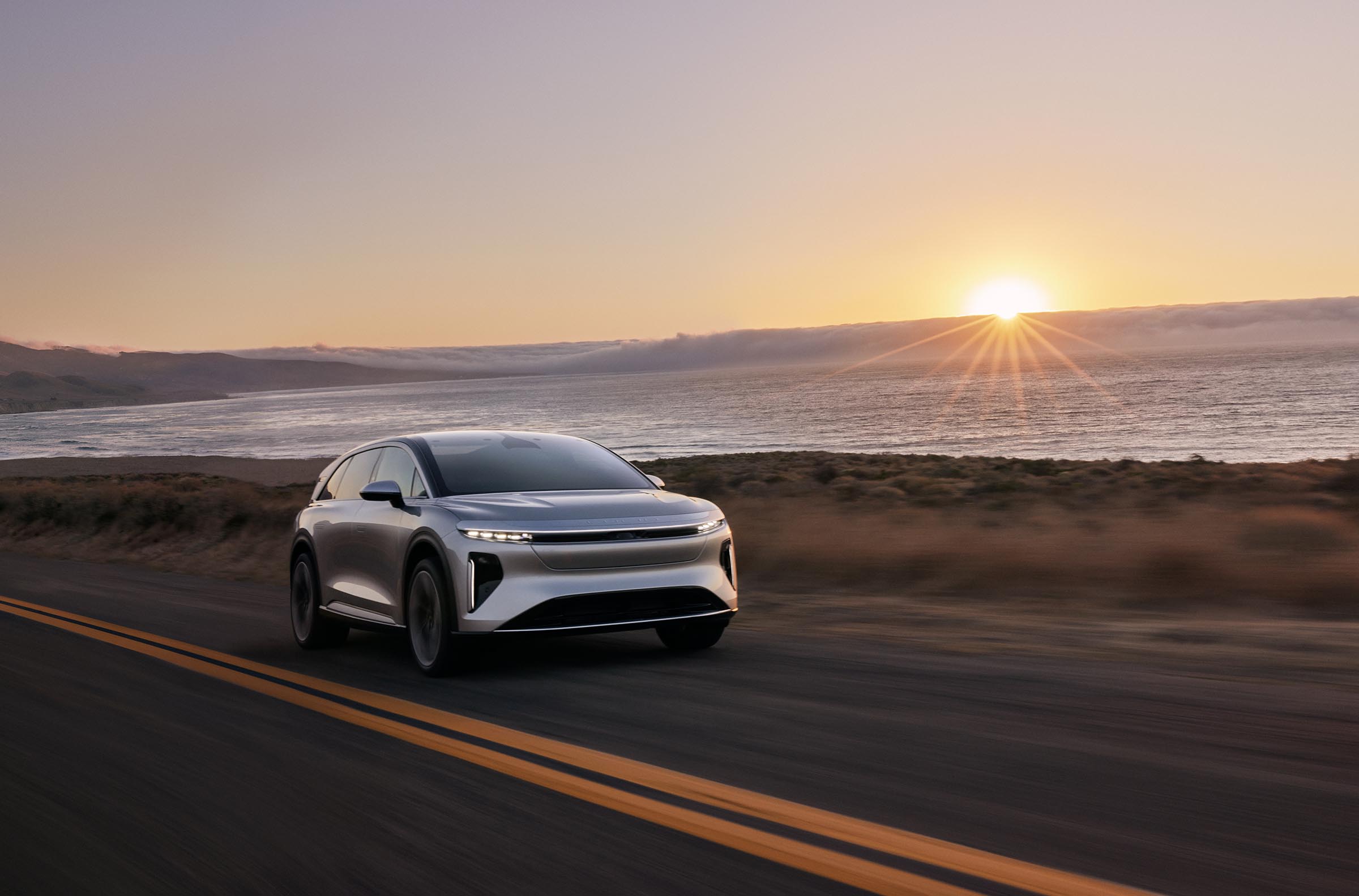
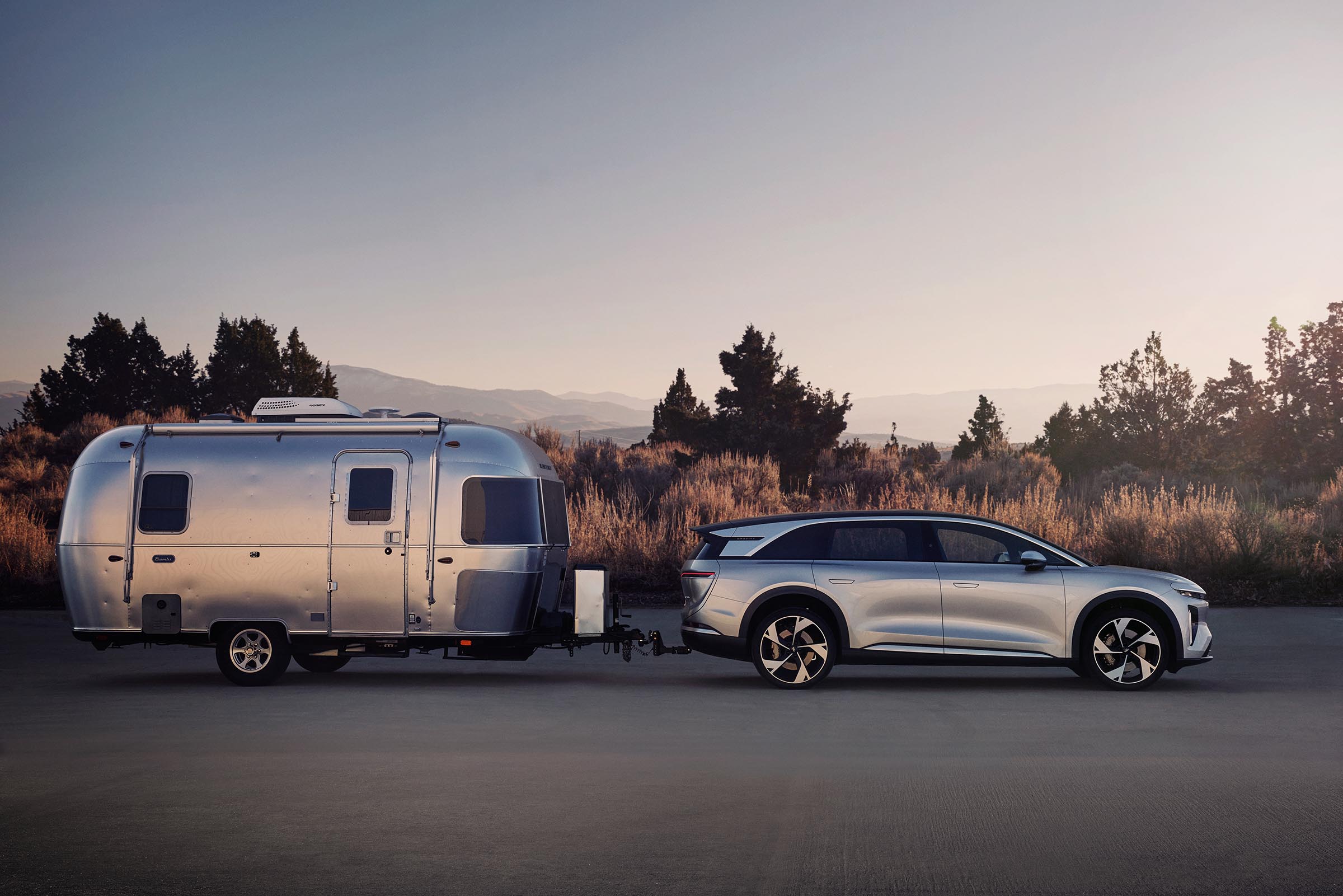
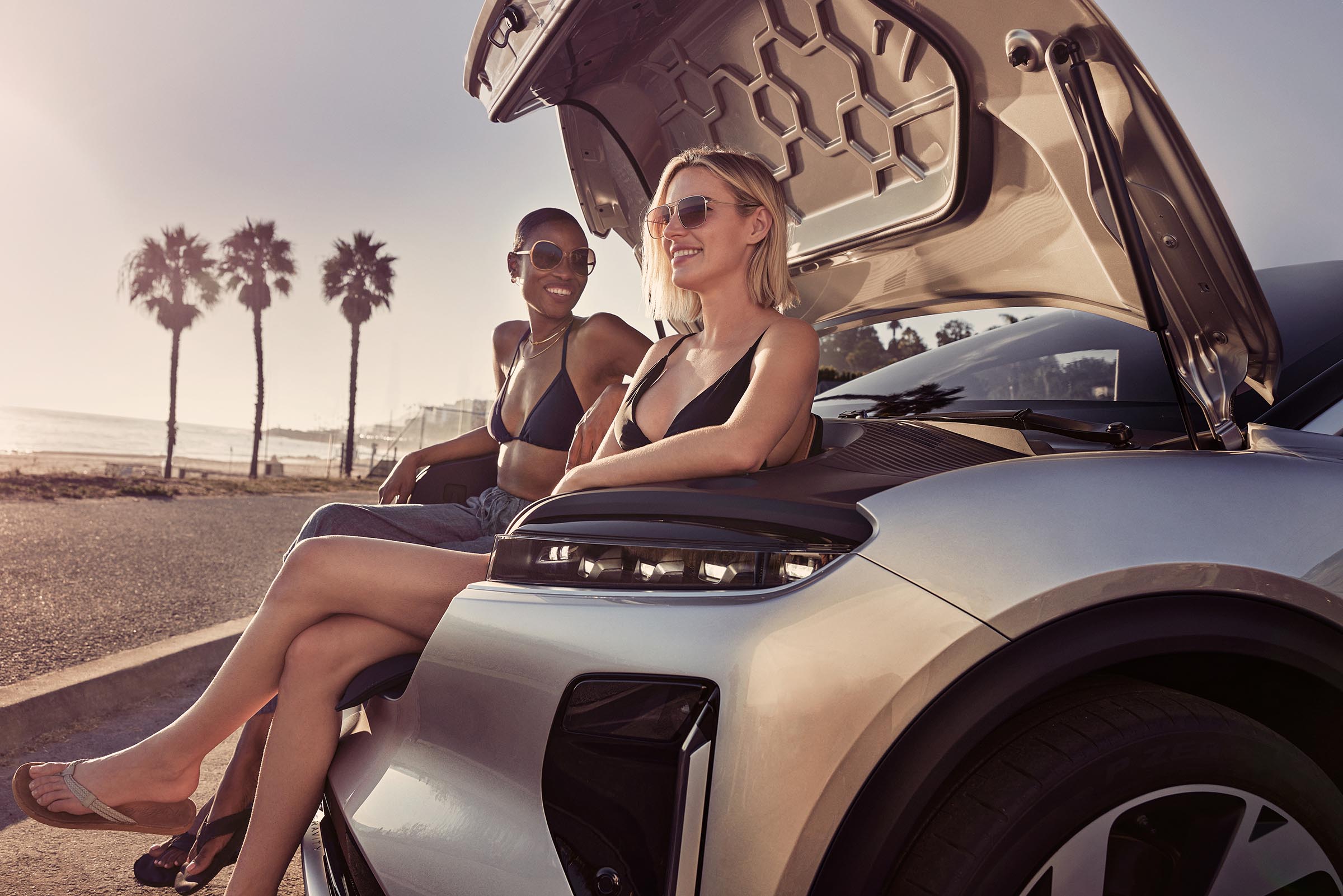
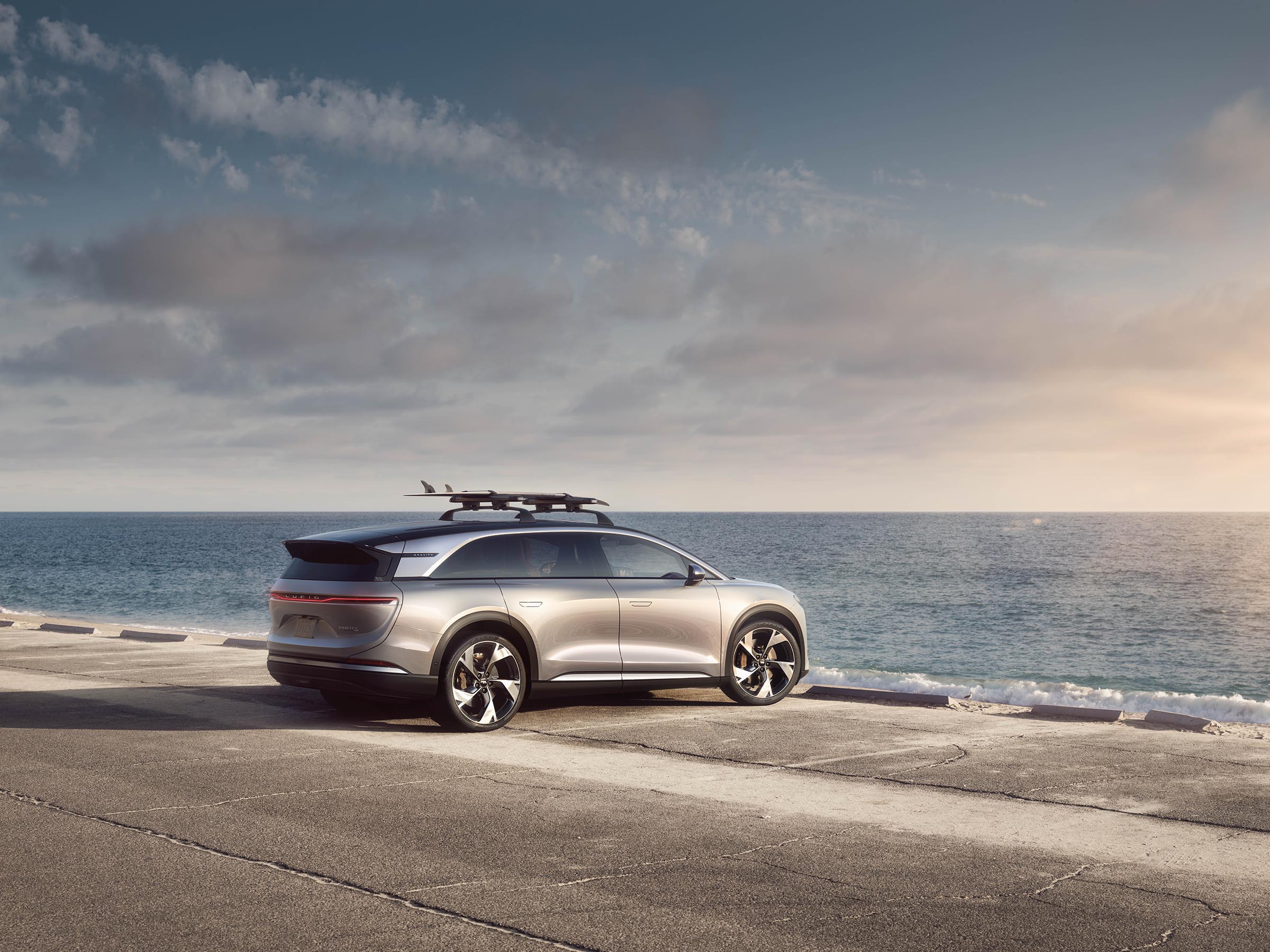
0 Comments